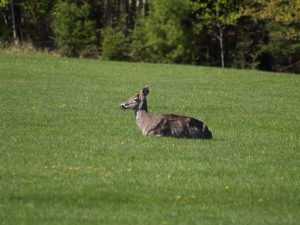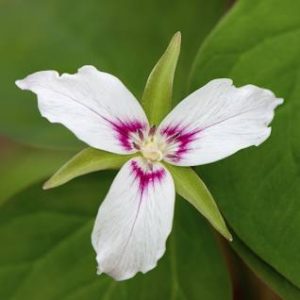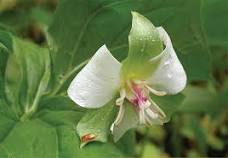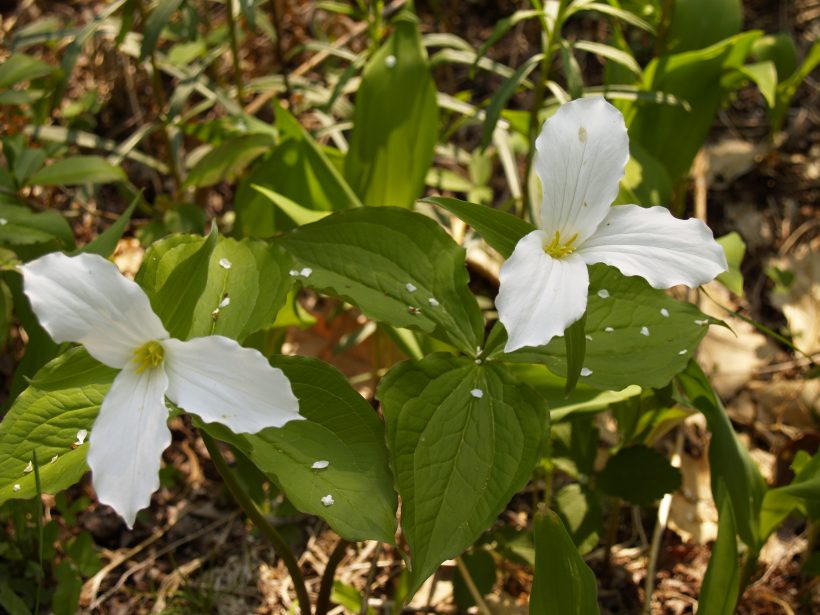ONTARIO’S OFFICIAL FLOWER
It’s like clockwork. The trilliums blossom and the black flies erupt. Although most are familiar with the white trillium, Ontario’s official flower, there are a total of 50 species native to North America’s temperate regions and Asia.
Did you know?
The ‘Tri’ is of course from the living Latin meaning ‘three’ in reference to the three leaves, three petals and three stigmas in the flower. And no, the plural is not ‘trillia’ but ‘trilliums’.
Also known as the birthroot or birthwort, probably depending upon your point of view, the trillium was once used during childbirth and to treat wounds. Another name, although not so appropriate presently, is ‘wake-robin’ from a time when the flowers bloomed before the Robins arrived. A perennial plant, the fragile trillium only blooms for a few weeks in early spring taking advantage of the leafless trees to absorb more sunlight and collect all the nutrients that it requires to survive another year. Pick a bloom and that won’t happen, perhaps killing the plant.
On March 25, 1937, the trillium was pronounced Ontario’s official floral flower in the Floral Emblem Act. It has been the province’s official logo since 1964. John Robarts was then Premier. In 2006 Premier Dalton McGuinty completely revamped the trillium logo, dubbed “three men in a tub” (“once you see it, you can’t unsee it”) causing much criticism for both the design and cost. Premier Ford restored the original logo design, with some variations, in 2019.
I have written before that the trillium and ants have a symbiotic relationship. The elaiosome is a fleshy structure attached to the seeds and is rich with nutrients. The ants eat it after carrying the seeds to their nests. Eventually the seeds germinate and sprout new plants. This method of dispersal is known as myrmecochory and if I spelled it correctly and you can say it then here’s one for Jeopardy.

It seems that white-tailed deer like to eat the trillium, especially the white ones. They disperse the flower as well. It takes two years for a seed to fully germinate and up to ten years to flower. Blooms average three weeks in duration. Being phototropic the bloom will bend to follow the sun. The trillium will live from 10-13 years.

Of the five trillium species native to Ontario – the white, red, painted, nodding and drooping – only the drooping is endangered. It grows in the warmer Carolinian forests of SW Ontario at two known locations, along the Sydenham River in Middlesex County and along the Thames River in Elgin County; reduced previously from six. Habitat loss due to urban development and recreational activities such as hiking and ATVs are a major factor.

The Phytoplasma bacterial parasite spreads like a virus by sap-sucking insects or via infected seeds and will kill the trillium after several years. If you find a trillium with swaths of green colour in its petals, it is infected. Japanese scientists discovered phytoplasmas in 1967. Phytoplasmas are the plant and insect version of mycoplasmas which are a significant cause in humans of “walking pneumonia”.
Some Things You May Not Know About the Trillium
The trillium is scientifically known as trillium grandiflorum.
The roots of several species contain chemical compounds called sapogenins that act as astringents, antiseptics, coagulants, expectorants, and uterine stimulants.
Contrary to common knowledge it is not illegal to pick trilliums in Ontario. Just not recommended. Although Peterboro-Kawartha MPP Jeff Leal’s private member’s bill, the Ontario Trillium Protection Act passed first reading in 2009 it never became law. That bill would have made it illegal to pick up or dig a white trillium. The penalty would be a minimum fine of $500.00.
During WW1 there was a movement to choose a national floral emblem to be planted on the graves of Canadian servicemen overseas. A special committee of botanists to the Ontario Horticultural Association recommended the trillium. A national flower was never chosen.
The original trillium symbol was designed by Norman B. Hathaway and Wolfgang Letzin of the firm Hathaway-Templeton. In 1972, at the request of Premier Bill Davis, Ernst Barenscher at Norman B. Hathaway Associates designed an updated version. The method of seed dispersal by ants, called myrmecochory, is not unique to the trillium. Many flowering plant species are dispersed in this manner.
White-tailed deer favour the larger flower of the white trillium, leaving the smaller ones. Deer also disperse trillium seeds far and wide. Many Ontario provincial parks use annual trillium surveys to understand the population density of white-tails and their effect upon the understory. In the early 1970s I recall MNR employees counting the deer pellets during the spring black fly season to study the deer numbers. What a joyous thought!
